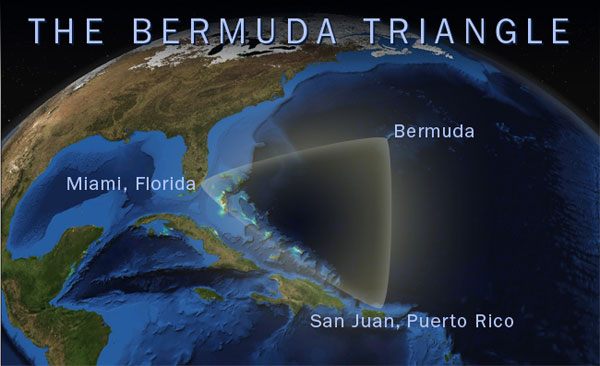Have Scientists Cracked the Mystery of the Bermuda Triangle?
Some have questioned whether there is any mystery at all.

The location of the so-called Bermuda Triangle. (Photo: National Oceanic and Atmospheric Administration/CC BY 2.0)
The Bermuda Triangle, so named in a 1964 story in America’s first pulp magazine, the infamous Argosy, has long been controversial. Its existence as a center for sunken ships and downed airplanes has never gained official traction: the U.S. Navy doesn’t recognize it, nor does the U.S. Board on Geographic Names even list it as a place.
But that, of course, hasn’t stopped amateurs and some real researchers from studying and speculating about the area. This week, Bermuda Triangle fans might be seeing a breakthrough: Norwegian scientists announced they had found new evidence to support an old theory—that oceanic flatulence was behind some of the shipwrecks.
Newly-found craters off the coast of Norway suggest the sea’s potential for enormous blowouts of methane gas, the scientists said, adding some credence to an idea that has been floated before. The theory is that gas bubbles rising to the surface could sink an unfavorably-positioned ship, some scientists have speculated, though a proven case of that happening has never been recorded.
Skeptics have long held that there is a simple explanation for the phenomenon: the area is one of the most highly-trafficked shipping routes in the world, in addition to being the site of numerous tropical storms and the Gulf Stream, which can cause sudden changes in the weather. The latest evidence isn’t likely to stop true believers in the supernatural, though, or even Steven Spielberg, who explained in Close Encounters of the Third Kind that aliens were in fact behind the disappearance of Flight 19.











Follow us on Twitter to get the latest on the world's hidden wonders.
Like us on Facebook to get the latest on the world's hidden wonders.
Follow us on Twitter Like us on Facebook